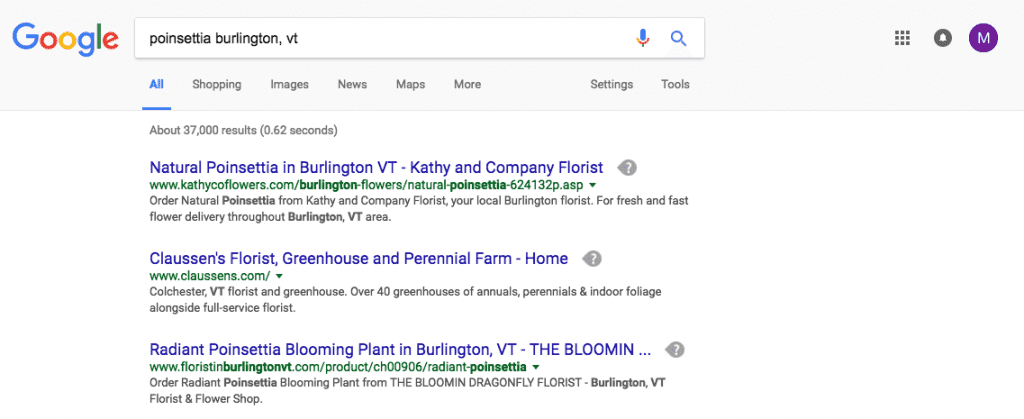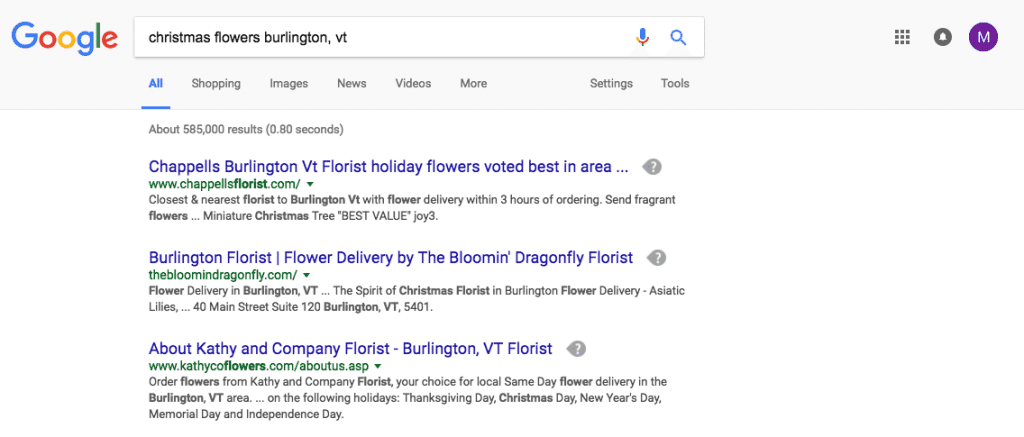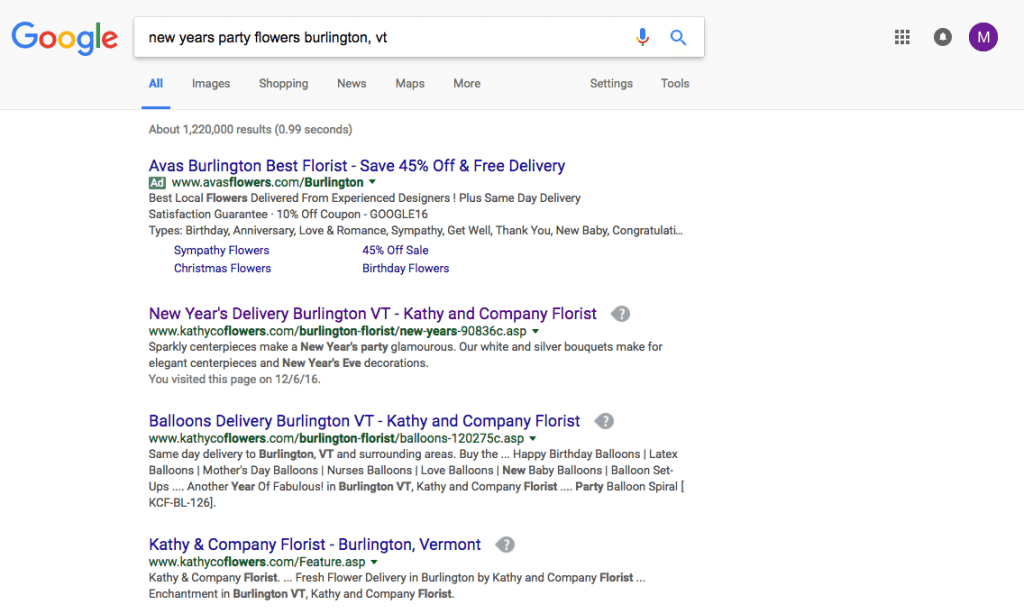
We’ve gift-wrapped a few holiday SEO tips for you.
The holidays are right around the corner here (THEY’RE HERE!!!), and search engines are in overdrive trying to match givers to gifts. According to Google, a staggering 92 percent of holiday shoppers use the internet to either research or purchase gifts. So, when a customer goes online to look for your brand or is searching for a product that you offer, how can you make sure that your brand is both visible and useful at the time of search?
You’ve probably Googled yourself before, we all have. But have you done an internet search for your brand without using your brand as a search keyword? You probably should, considering 90 percent of mobile shoppers are not set on any one particular brand when they begin searching for the product they intend to buy (data via Google).
This holiday season, take a look at how well your brand is positioned to take advantage of online shoppers. If you subscribe to the Google way of thinking (which you should if you want to win at search marketing), this is what is known as the “be there” directive. If your brand is not there when consumers are searching for a product or service that you offer, then you’re more than likely going to miss out on that business.
Try it out: Grab a pen and paper and imagine you’re a holiday shopper looking to purchase any of your goods and services. Brainstorm the search terms they might use to find brands that offer these desired items, and write them down. Include your location, specific products, product categories and occasions when compiling your list of keywords. Remember, context and intent are very important when considering search keywords, so be sure to think about why they’re searching, not just what they’re searching for.
Once you have a good list of search terms, open up a browser on your computer or smartphone, and start searching. Keep that pen and paper handy! For every search term you use, take a note of where your brand shows up on the SERPs (search engine results pages). Is your brand one of the first items returned? Are you on the first page at all? How about second page? Third?
As you go down your list of search terms, also keep an eye out for any specific patterns that you see. Are you noticing the same two or three brands popping up for search terms that include locations? Which brands are visible in the paid spaces (listings marked with “Ad”) as well as the organic spaces (the non-paid search results)? What about paid only or organic only?
Take note of the brands that are the most visible and then take a look at their content. How is it different from yours? Are they structuring their page titles and copy around the terms that you searched for? Do they have pages or posts dedicated to the needs that your search terms are suggesting?
Evaluate and Adjust: Try to answer the following question for each search term and set of keyword that you wrote down at the beginning of this exercise: Why did I find this brand as a result of this search? Then ask yourself this question: Why did I not see mine?
Now that you’ve got a better idea of where your brand ranks with a list of important holiday search keywords, take a look at your content strategy and plug the holes. If you’ve got a blog post that addresses the needs of any of these search terms (hostess gifts, or holiday décor, for instance), but your brand still isn’t visible, try building those keywords into the article title and use them more often within the body of the post. Share the post on Facebook and Twitter and get people clicking. This activity is good for the SEO of your content and will improve your brand’s ranking as it related to these search terms.
Let’s walk through one together. Let’s say I’m a florist in Burlington, Vermont, and I’m evaluating my brand’s SEO for a few holiday search terms. I came up with a list that included the following: “poinsettia burlington, vt”, “christmas flowers burlington, vt”, “new years party flowers burlington, vt”. One is specific, one general, and another more abstract. I’ve written them down so let’s get searching.
My first search is for “poinsettia burlington, vt”, a search for a specific holiday plant, and these are the first three results:
My notes will say that Kathy and Company comes up first because they have a specific page dedicated to poinsettia whose title includes the keywords “poinsettia” and “burlington, vt”.
My next search is for the more general terms “christmas arrangements burlington, vt”, and here are the results:
I would take note of the fact that Chappell’s Florist comes in first, because they have a meta description within the HTML of their homepage that includes all of the keywords that our search terms included. There are no dedicated holiday flowers pages or posts that are returned, however, so I would see this as an opportunity for my brand to create a page specifically for this need and include these keywords in the title, meta description and content of the page.
My final search term for “new years party flowers burlington, vt” yields these interesting results:
The first item returned is an AdWords Search Network ad for Avas, indicating they have a search engine marketing campaign in which they are paying for these keywords. The organic results are dominated by relevant content from Kathy and Company that uses “new years party”, “flowers” and “burlington, vt” in the page titles and within the body of their pages.
Let’s recap: We put our consumer hats on and identified a list of keywords that we thought would and should bring traffic to our website. Then we performed web searches using those terms and identified which brands are most prominent for each set of terms. Finally, we evaluated why these brands popped up, how we can take advantage of these methods for increasing the SEO of our content, and also identified opportunities to “BE THERE” when other brands are not.
Try it out for yourself! See where your brand ranks this holiday season, and how well your content and SEO strategy is appealing to consumers. For a great tool to see where your brand ranks for specific keywords, check out the rank checker from SERPS.com.






